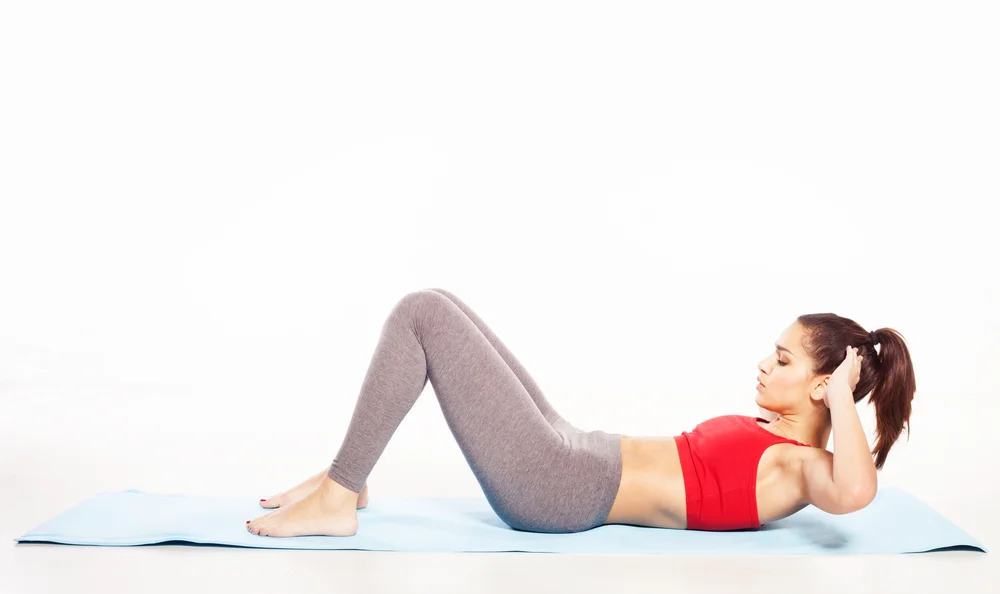Exercise

If you suffer from stiffness around your neck, shoulder, and upper back, you can try performing some different neck movements to try and loosen up.
Neck mobility exercises can help improve flexibility, range of motion, and strength in the neck and upper back muscles.
These exercises can be especially helpful for people who experience neck pain or stiffness, or who have a sedentary lifestyle and may have poor neck mobility.
When it comes to exercising, we are inundated with exercises to help strengthen our core and glutes.
After all, most of us want rock hard abs, right? But, it’s just as important, if not more, to strengthen your neck muscles, especially if you suffer from discomfort in this area.
Certain neck mobility movements can help improve your overall posture and alleviate tension and even stress.
In other words, if you start practicing neck mobility exercises, you could transform your life and start living pain-free again.
Today, we are going to guide you through seven of the best neck mobility exercises to try at home.
These will all help you in various ways, whether you have tension headaches or pain in various parts of your body.
So, it’s time to stop that pain in the neck and tackle it once and for all!
Why Should You Strengthen Your Neck?
There are numerous reasons why strengthening your neck can be beneficial. Here are the main benefits of doing so:
- Relief of neck pain and stiffness – Strengthening the neck muscles can help alleviate pain and stiffness, particularly around the neck, shoulders, and upper back. Such exercises are especially beneficial if these issues are caused by muscle imbalances or weak muscles.
- Improved posture – Strong neck muscles can help support good posture and reduce the risk of developing muscle imbalances or poor posture habits.
- Reduced risk of injury – A strong neck can help protect against injuries from falls or accidents. The stronger your neck muscles are, the faster you can recover from injuries, too.
- Improved performance in sports and other physical activities – For those who regularly play sports or take part in physical activities, strong neck muscles can help improve balance, stability, and overall athletic performance.
- Improved appearance – Strong, toned neck muscles can contribute to a more defined and aesthetically pleasing appearance.
It’s important to remember that neck strengthening exercises should be done in conjunction with other forms of exercise and a healthy lifestyle.
As with any form of exercise, when you start, you need to perform the movements slowly.
Gradually, you can increase the intensity of the movements as you grow more comfortable and your neck muscles become stronger.
If you have any concerns about your neck or experiencing neck pain, it’s always best to consult with a healthcare professional.
Neck Mobility Exercises
1. A Chin Tuck (Look Up and Down)
The chin tuck is a great exercise to start with, particularly if you’re new to neck mobility movements.
To perform this movement:
- Start with two hands on your chest so you can focus on your neck.
- Now, lift your chest. This will isolate the ligaments and muscles in your neck.
- Lift your chest until you feel your neck start to stretch.
- Next, look down and then up. Continue to do this with your neck held high during movements. Try to pivot the top of your skull and tuck your chin in as well during the movements.
2. Head Lifts
Another great exercise to try is a Head Lift. Head lifts, also known as neck extension exercises, can help improve the flexibility and strength of the muscles in your neck.
These exercises can be particularly helpful for people who experience neck pain or stiffness, as they can help to stretch and strengthen the muscles in the neck and upper back.
Here’s how to perform head lifts:
- Lie on your back and lift your head slightly off the ground (when we say slightly, we mean, just a tiny bit so you’re almost touching the ground but not quite).
- Now, lower your chin downwards and look towards your knees. This should create some elongation in your neck. Keep your mouth closed and list your head slowly and slightly off the mat.
- Try to hold this position for 10 to 30 seconds and aim for three rounds at first. Once you feel more comfortable, increase this to five rounds of head lifts.
This exercise can be a little tough, especially for newbies, so don’t be alarmed if you start to shake a little. This is completely normal. Just perform it slowly and gradually until you feel comfortable.
3. Neck Lifts Using Resistance
Performing neck lifts with resistance can help to further strengthen and tone the muscles in the neck and upper back.
Resistance can be added to the exercise by using a resistance band or by placing a weight on your forehead or behind your head. For this movement, we recommend using a resistance band.
Here’s how to perform these neck lifts:
- Place the band behind your head and hold it with two hands out in front.
- Now, push back against the band to create tension as you hold the band. This will cause some strain in the neck.
- You’ll need to create resistance using the band without retracting your head or neck. Just focus on lifting and lengthening your neck.
- If you retract your head too far back, you can test it by simply swallowing. Too far back, and you won’t be able to swallow. If this is the case, you are not in the right position so you must work on proper alignment.
Make sure you do not force your movement here as this position is quite unnatural. Your body needs to be in a fully functional place that doesn’t cause too much strain on your neck.
4. Look To The Right And So the Left
This is another simple exercise for beginners, all you need to do is look to the left and to the right. These movements can help increase flexibility and reduce stress and tension around the area.
Here’s how to do it safely:
- Push your shoulder blades back and together.
- Now, rotate your neck from one side to the other.
Many people make the mistake of looking to one side more than the other, so make sure you rotate your neck from one side to the other equally.
Try and turn your neck until it feels uncomfortable, or you feel ifr even snapping your neck.
5. Tabletop

Tabletop neck mobility exercises, also known as neck flexion and extension exercises, can help to improve the flexibility and strength of the muscles in your neck.
These movements can strengthen and stretch the muscles in the neck, shoulder blades, and upper back.
Follow these steps:
- Start by kneeling down on your hands and knees to get into a tabletop position.
- Grab your resistance band and wrap it around the back of your head, and hold its ends with your hands flat on the floor.
- Slowly bring your head up and backward.
- Stretch out your neck and pull your shoulder blades back. Now, keep the resistance band in this position for a few seconds until you feel a stretch.
For a little more resistance, you can gently rotate through your neck. Make slight rotations from side to side, as well as gentle nodding motions.
This neck mobility exercise targets those deeper neck muscles so you may feel some discomfort at first.
6. The Cellphone Drill
The cellphone drill helps to correct the forward position of your chin, therefore, aiding your posture and possible discomfort.
Here’s how to perform the cellphone drill:
- Start by sucking your chin back (in other words, make a fat face with a double chin). Once you can see or feel your double chin, you’re in the correct position.
- Next, move your neck forward a little. Continue to do this movement to help increase the forward and backward motion and mobility of your neck.
7. Slide From Side to Side (The Janet Jackson Slide)
Ever seen Janet Jackson slide her neck from side to side in her music videos? Well, this is what you are going to mimic to help relieve neck pain.
Just make sure you keep your eyes level throughout the whole range of motion.
Here’s how to slide like Janet:
- With your eyes level, slide your neck from side to side, trying to keep your head as level as you can. You may hear a few “crunches” in your neck but hopefully you will start to loosen up.
This exercise is quite challenging, so you may need to spend some time practicing it before conquering its proper technique.
Practice by looking in the mirror to ensure your head is level the whole time.
In Summary
Neck mobility exercise can help relieve stress, tension, headaches, and pain in your neck, shoulders, and upper back.
Try these mobility exercises and you should start to see beneficial results soon.





